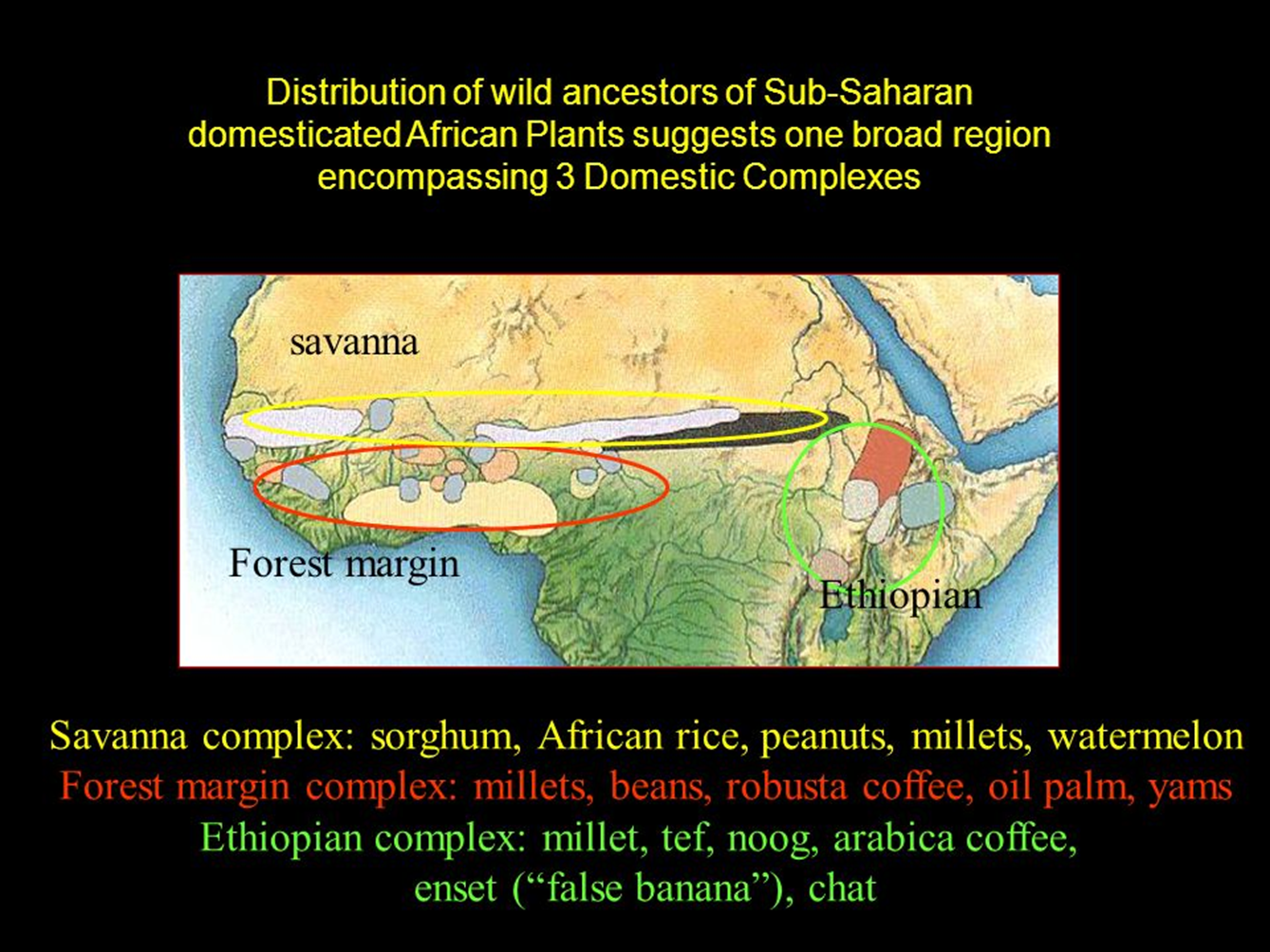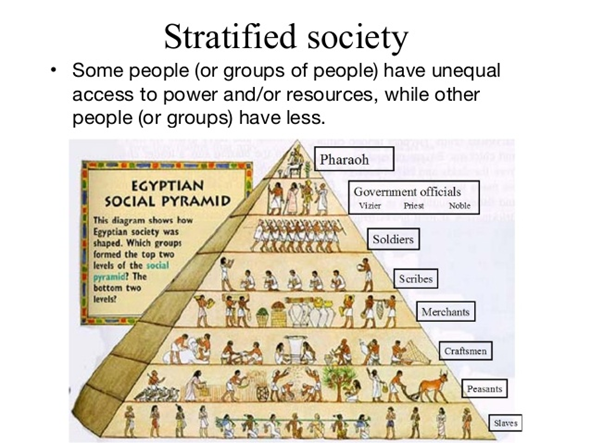Ancient Civilization: Chapter 9 and 10 (Kill me.)
1/80
There's no tags or description
Looks like no tags are added yet.
Name | Mastery | Learn | Test | Matching | Spaced |
|---|
No study sessions yet.
81 Terms
Chapter 9: A Feast of Diversity
Study Guide:
This chapter examines the origins of agriculture in Africa, and New Guinea.
After reading this chapter, you should know:
•Role of pastoralism and the timing for the introduction of pottery in Africa.
•The nature and significance of the archaeological site at Kuk Swamp, New Guinea.
Key terms: Sahara desert, pastoralism, tumuli, first farmers, Sahul,
Key sites: Nabta Playa, Uan Afuda, Gobero, Kuk Swamps,
Key individuals: F. Wendorf,
•Development of agriculture in Africa involved the domestication of indigenous plants and possibly cattle, and the adoption of Middle Eastern domesticated plants and animals. Three regions are crucial:
Northeast Africa, Central Africa and West Africa.
Northeast Africa:
Northeast Africa, teff and finger millet, and coffee were domesticated. Timing and process of plant domestication are poorly understood.
Central Africa:
Central Africa, pearl millet and sorghum were domesticated. Pearl millet was domesticated in the Sahara.
West Africa:
West Africa, African rice was domesticated.
African agricultural systems incorporated:
African agricultural systems incorporated Middle Eastern domesticated plants and animals (wheat, barley, lentils, sheep and goats).
Some genetic evidence that cattle:
Some genetic evidence that cattle was perhaps domesticated independently in Africa.
•Development of agriculture in Africa involved the domestication of indigenous plants and possibly cattle, and the adoption of Middle Eastern domesticated plants and animals. Three regions are crucial!!
•Development of agriculture in Africa involved the domestication of indigenous plants and possibly cattle, and the adoption of Middle Eastern domesticated plants and animals. Three regions are crucial:
Northeast Africa, teff and finger millet, and coffee were domesticated. Timing and process of plant domestication are poorly understood.
Central Africa, pearl millet and sorghum were domesticated. Pearl millet was domesticated in the Sahara.
West Africa, African rice was domesticated.
African agricultural systems incorporated Middle Eastern domesticated plants and animals (wheat, barley, lentils, sheep and goats).
Some genetic evidence that cattle was perhaps domesticated independently in Africa.
Distribution of wild ancestors of Sub-Saharan

The Sahara Desert:
•14,000 - 5,000 years ago, there was considerably more rainfall in the Sahara
Sahara Desert
•Current arid environment in the Sahara developed within the last 5,000 years.
Sahara Desert 3:
•During early periods (rainfall), sites were small villages of hunter-gatherers; very similar to Natufian societies in size, structures, subsistence (exploitation of a wide range of resources), and the use of grinding stones.
Sahara Desert 4:
•However, in Africa, pottery and a large number of storage pits appeared earlier than in Natufian sites.
Nabta Playa 1:
•9,000 y.a. (North Africa)
Nabta Playa 2:
•Hunter-gatherers settlement.
Nabta Playa 3:
•Small lake surrounded by grasslands. Today is barren
Nabta Playa 4:
•Huts were circular and built in two rows
Nabta Playa 5:
•Storage pits found next to the remains of each structure
Nabta Playa 6:
•Pottery in the form of small jars and bowls with impressed designs.
Nabta Playa 7:
•Large range of plant remains, in particular collection of wild sorghum.
Uan Afuda:
•Cave in Libya (North Africa)
Uan Afuda 2:
•9,000 – 8,000 y. a.
Uan Afuda 3:
•Wooden artifacts, basketry, charcoal, and seeds (great preservation)
Uan Afuda 4:
•Exploitation of a wide range of resources
Uan Afuda 5:
•10 cm deep deposit of animal dung and plant remains found in the back of the cave
Uan Afuda 6:
•Dung comes from wild barbary sheep, a never domesticated African species.
Uan Afuda 7:
•Inhabitants were probably keeping the wild sheep in a pen at the back of the cave
Uan Afuda 8:
•It is an early form of animal management (capturing live animals and keeping them corralled in a cave
Gobero 1:
•Southern boundaries of Sahara (Niger, Central Africa)
Gobero 2:
•Cemetery and associated habitations dating to 9,700 to 8,200 years ago
Gobero 3:
•Site was located on a peninsula next to a large lake
Gobero 4:
•Fish was a large part of the diet
Gobero 5:
•Barbed bone points, bladelets, and pottery
Gobero 6:
•Site was abandoned
Pastoralits 1:
•Domesticated animals were introduced before domesticated plants in northern Africa.
Pastoralits 2:
•Domesticated cattle, sheep, and goats were incorporated into mobile hunter-gatherer societies
Pastoralits 3:
•They became pastoral societies (maintenance of domesticated herds)
Pastoralits 4:
•F. Wendorf, argues that cattle was domesticated independently in this area (Nabta Playa/Egypt) as early as 10,000 years ago. Theory is not widely accepted
Pastoralits 5:
•By 8,000, domesticated cattle, sheep, and goats had been introduced into societies that did not rely yet on domesticated plants.
Pastoralits 6:
•At the site of Nabta Playa, societies were relying on domesticated cattle roughly 7,500 years ago.
Pastoralits 7:
•A series of cattle burials was found under piles of stones known as tumuli
The First Farmer 1:
•In Egypt earliest evidence of domesticated plants dates to 7,000 years ago. Adopted by hunters and gatherers as a “backup” for periods of droughts in the Nile.
The First Farmer 2:
•Once domesticated plants were introduced, large villages developed rapidly in the rich environment of the Nile Valley.
The First Farmer 3:
•In western Africa, earliest evidence of domestication is the imprint of domesticated millet grains found in the village sites around 3,500 years ago
The First Farmer 4:
•Sorghum was introduced later.
The First Farmer 5:
•Pottery was introduced at the beginning of the sequence in Africa. In the Middle East, pottery appears in the late Neolithic.
The First Farmer 6:
•Pastoral societies developed earlier that agricultural villages
New Guinea 1:
•New Guinea, Australia, and Tasmania formed a single land mass known as Sahul
New Guinea 2:
•Today, New Guinea is divided into Papua New Guinea (east) and the Irian Jaya Indonesian province (west)
New Guinea 3:
•Present day agricultural societies rely on the cultivation of sweet potatoes and maintenance of pigs. They are part of their subsistence system and socio-political structure. Accumulation of sweet potatoes is an essential element of gaining power
New Guinea 4:
•Sweet potatoes were domesticated in South America and introduced into New Guinea in the 16th century. They were brought to the Philippines by Spanish sailors.
New Guinea 5:
•But numerous indigenous plants were domesticated in New Guinea: yams, bananas, taro, and possibly sugar cane. Agricultural process involved transplanting suckers, cuttings, or shoots rather than planting seeds.
Clearing Forests and Draining Swamps 1:
•Earliest evidence of human occupation along the coast of New Guinea dates back to 40,000 ago.
Clearing Forests and Draining Swamps 2:
•In the highlands, the earliest occupation is dated to approximately 30,000 years ago.
Clearing Forests and Draining Swamps 3:
•Animals bones recovered from these areas indicates that a wide range of animals were hunted.
Clearing Forests and Draining Swamps 4:
•There is no evidence of domesticated plants and or animals
Clearing Forests and Draining Swamps 5:
•Polished axes dating to 10,000 years ago have been found on a number of sites
Kuk Swamps 1:
•Ancient agricultural field system
Kuk Swamps 2:
•Presence of drainage canals, pits, and earth mounds
Kuk Swamps 3:
•Efforts to drain the swamp and create beds for planting crops
Kuk Swamps 4:
•At least 3 phases of construction: 10,000 y.a., 6,500 y.a., and the third phase, dated to 4,000 y.a.
Kuk Swamps 5:
•At this time, a network of drainage ditches was excavated through the site
Kuk Swamps 6:
•At 3,000 y.a., maintenance of agricultural fields came to an end
Kuk Swamps 7:
•Taro (starch grains on stone tools) has been identified in the first two occupations. It was probably brought from the lowlands and cultivated in the highlands.
Kuk Swamps 8:
•Evidence of banana (phytoliths) cultivation around 6,500 y.a. At this time, environment changed to a grassland, thus, banana (which grows naturally in the forest) was tended by humans.
Questioning the Neolithic 1:
•Origins of agriculture is a “messy” and fragmented series of developments (Julian Thomas, 1999).
Questioning the Neolithic 2:
•Any attempt to define a particular set of attributes as constituting the Neolithic will be arbitrary.
Questioning the Neolithic 3:
•In all regions, the transition to agriculture was a gradual process.
Questioning the Neolithic 4:
•Settled villages preceded agriculture in the Middle East but not in New Guinea.
Questioning the Neolithic 5:
•Pottery developed early in Africa and late in the Middle East and New Guinea
Questioning the Neolithic 6:
•Development of agriculture is a complex process involving changes in the biology of plants and animals, human subsistence strategies, human social organization, etc.
Questioning the Neolithic 7:
•Transition to agriculture follows many different trajectories, depending on the plant and animal species involved, the characteristics of the local environment, and the individual cultural practices.
Questioning the Neolithic 8:
•Diversity found in the archaeological records forces us to recognize the need for multiple perspectives on the origin of agriculture.
Social Complexcity: (Morton Fried)
Morton Fried
•Egalitarian societies: Status difference is based on age and gender. Production takes place within the household. Exchange is based on reciprocity.
Social Complexity (Ranked Societies):
•Ranked societies: Hierarchy based on prestige. Appearance of ascribed status (status gained at birth). Role of “chiefs” and/or “big men” is to collect and redistribute resources.
Dobe Ju/Hoansi, South Africa

Yanomamo, Amazonia, South America

Morton Fried:
•Stratified societies: Unequal access to resources. Access is tied to prestige. Stratified societies are characterized by a growth of exploitation, strong specialization, demands on labor, and institutional slavery.
Morton Fried (States):
•States: Use of power to maintain the social hierarchy. Characterized by population control (fixing of state boundaries), development of a legal system, maintenance of military and police forces, taxation, and conscription
Stratified Society:
